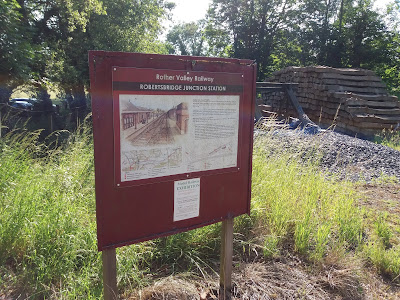On Saturday just gone, I caught up with my three walking
companions from the previous week for another jaunt along the North Downs Way. We weren’t continuing from where we’d
ended up the previous week, as the three of them had completed that particular
walk the day after. I was rather glad that I hadn’t joined them, as two
lengthy hikes in a row would have been a bit too much, as far as I was
concerned.
Instead, with an eight day break since my last foray into East
Kent, I was relatively fresh and raring to go. Saturday’s walk was
actually the climax of the North Downs Way; or at least it was for the member of our
group who had set out from Farnham over two years ago, to walk the 156 miles to
Dover. This particular friend had
actually completed the main route last year, and what I was joining him and his
other two companions on was the so-called “Canterbury
loop”, which follows the gap in the hills made by the River Stour, as its winds
its way towards the cathedral city, before heading back towards Dover
in s south-easterly direction.
Conditions were a little cooler than they had been the
previous week, and were therefore much more conducive to walking. So with a
relatively early start, we boarded the 09.23 train from Tonbridge to Dover
Priory. The countryside was looking a little greener than it had done the
previous week, no doubt helped by the much welcome rain we’d had in the meantime.
We arrived in Dover
just over an hour later, and with three quarters of an hour to wait for our
connection to Shepherdswell (our starting point for this section of the trail),
we walked the short distance into the town centre and found a convenient coffee
shop. It is always good to support an independent café, rather than one of the
big, multi-national chains, and the Mean Bean Coffee Shop proved a good find.
With a friendly welcome and table service to match, in bright and airy
surroundings, the resultant coffee was also excellent and just the thing for
the start of a lengthy walk.
 Suitably refreshed, we returned to the station and boarded
the Canterbury-bound train for just two stops, alighting at the delightfully
named village of Shepherdswell.
Our plan was to join up with the NDW and walk the nine or so miles towards Dover;
but not before a hastily arranged pub-stop.
Suitably refreshed, we returned to the station and boarded
the Canterbury-bound train for just two stops, alighting at the delightfully
named village of Shepherdswell.
Our plan was to join up with the NDW and walk the nine or so miles towards Dover;
but not before a hastily arranged pub-stop.
It is not normally a good idea to stop for refreshment so
early on in proceedings, but we were all agreed that as we were unlikely to be
passing that particular way again, it would be a shame to miss out on a visit
to a rather unique micro-pub. Consequently we headed north, towards the small village
of Barfrestone where, more by luck
than judgement, we stumbled along the track leading to the aptly-named Wrong
Turn.
This chalet-style pub, which opened in August 2014, is
situated at the end of a gravel drive, right on the edge of Barfrestone. There
is a sheltered patio area at the front of the building and a lawned garden with
picnic benches, at the side. The interior has a comfortable, but slightly
rustic feel with wooden tables and chairs, sideboard, piano and a wood-burning
stove. Beers and ciders are served on gravity dispense from a temperature
controlled cellar room behind the bar. A variety of snacks are available,
including home-made pork pies, scotch eggs and a cheese board.
After our short walk from the station (1.5 miles), it was a
good place to stop off at, and enjoy a glass or two of beer. The sun had been
shining ever since we left Dover,
so it was good to find shady spot on the veranda, just outside the entrance,
and make ourselves comfortable.
Wantsum Black Prince is reputedly the pub’s regular beer,
with up to two others available on an ever-changing basis. Not being a fan of
this particular dark mild, I opted instead for a pint of Flintlock from Musket Brewery
(3.0 NBSS), followed by a rather splendid pint of Oakham Citra (3.5 NBSS). A
range of traditional ciders is also available, and one member of our party
opted for an Elderflower Cider, which I think came from locally-based Kentish
Pip.
There was a reasonable turnover of people coming and going,
but the Wrong Turn was not busy enough to prevent the landlady from popping out
for a chat. She told us the premises has formerly been an art studio; her own, in fact. Following the closure of the only pub in the village, she
decided to convert the old wooden studio into a micro- pub; a rarity in a rural location. The name, the Wrong Turn, came about because people
looking for the former art studio, would often get lost.
To be continued......................................................














































